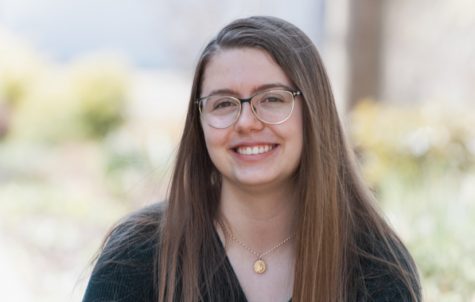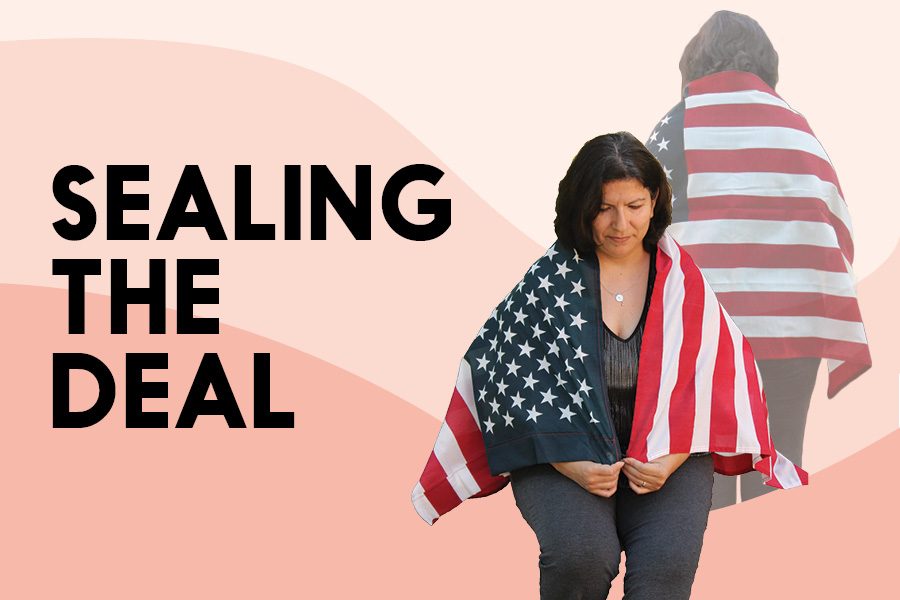Sealing the deal
Iowa goes bilingual by passing the Seal of Biliteracy legislation which will have a positive impact on Iowa City’s minority and immigrant community.
Unlike most tests that Lilian Montilla ‘21 has taken, this exam is something she’s been preparing for her whole life. In two years, she will get the opportunity to earn the Seal of Biliteracy, which was approved in Iowa on April 17, 2018.This opportunity will be available to all bilingual students.
The Seal is a distinction awarded by a school district or state to recognize students that are fluent in two or more languages before they graduate. Montilla’s mom is from Haiti and her father is from Venezuela, so she learned both English and Spanish at the same time.
“In a world where communication is a great source of information, it’s nice to not have to translate things written in the most spoken and prevalent languages.” Montilla said.
The Seal will be awarded based off of specific criteria. Similar to the Silver Cord, students must complete 200 service hours, the only difference being that to qualify for the Seal, ten of those hours must involve languages. For example, Montilla is working towards her service hours by peer tutoring kids in all levels of Spanish. The hours of work that students complete can go towards both Silver Cord and the Seal. The goal of the Seal is to encourage students to build upon their foreign language skills outside the classroom.
Another requirement of the Seal is being literate in English in order to take the test. This provides an incentive for the students in the English Language Learners (ELL) classroom, which is a program designed for students who are in the process of learning English as a second language.
According to ELL teacher Cat Haxton, the pressure to fit in with the status quo can increase the difficulty of school for students who aren’t yet fluent in English. When they are speaking in non-ELL classes, they don’t have the same correctional resources that they do in the ELL classroom, which can be nerve-racking.
“I had a student who I can just never get to stop talking, and when I sat in on his business class he was completely silent,” said Haxton. “When I asked him about it in class, he said that he didn’t want to say anything because he was too nervous he would mess up and be judged.”
Over the summer, the ICCSD put together a committee of people dedicated to creating a program to implement the Seal of Biliteracy at the high school level. One of those members, Pamela Wesely is a foreign language professor at the University of Iowa.
“Being bilingual is important for so many reasons. Obviously, it means that you can communicate with many more people in the world.” said Wesely. “It means that you can develop a better understanding of people who are different from you.”
Another member of the committee is ICCSD World Language Coordinator, Carmen Gwenigale.
“We think it’s only appropriate and right that we compensate [students] for the work they have done,” Gwenigale said. “If there’s something they can show on their transcript to say ‘I put all this work into a language, I studied it for four years and I can be fluent in that language…that can be beneficial in future jobs or even careers.’”
The law aims to affirm the value of diversity by honoring the multiple languages and cultures present in the community.
“There’s so much more to language than just the words. You can’t just translate a word and still have them hold the same value,” said Dean of Students Maria Martin. “It’s not just about the words, it’s about the meanings. You have to understand the cultural implications of the words.”
Martin’s own story begins in her grandparents’ home, a Spanish speaking farm in central Mexico. Being the last of her family born there, her family made sure she kept in touch with her Mexican roots throughout her childhood. They would spend the school year in Chicago and the summer in San Juan de los Lagos, Mexico.
Learning a new language requires a complicated amount of muscle memory, which is why some people can read and understand it years before they can actually speak proficiently. People often overlook or don’t acknowledge the educational progress that students are making because the students are not yet fluent.
“The brain goes through a period of enhanced plasticity during childhood, making it easier to acquire a first language as well as a second or third language,” said Dr. Steven Anderson, Director of the Neuropsychological Rehabilitation center at the University of Iowa. “Probably the greatest benefit [of bilingualism] is enriched neural representations of knowledge.”
Many students in the West High community speak more than one language. According to the ICCSD website, the ELL program serves approximately 1600 students in grades K-12 from over 70 language and cultural backgrounds.
“It’s interesting because in a predominantly English speaking community, we tend to underestimate the fact that many of our students and families are already bilingual and biliterate. They just aren’t bilingual with English yet,” Martin said.
The Seal of Biliteracy adds an extra level of acknowledgement and motivation to students. Those who complete the exam will not only be rewarded with a seal, but also with the satisfaction of knowing they are fluent in a language they might not have known a few years ago.
Your donation will support the student journalists of West High School. Your contribution will allow us to purchase Scholarship Yearbooks, newsroom equipment and cover our annual website hosting costs.

(she/her) Marta Leira is a senior at West High and editor-in-chief of the print publication. Marta enjoys running (sometimes), creating a an embarrassing...



